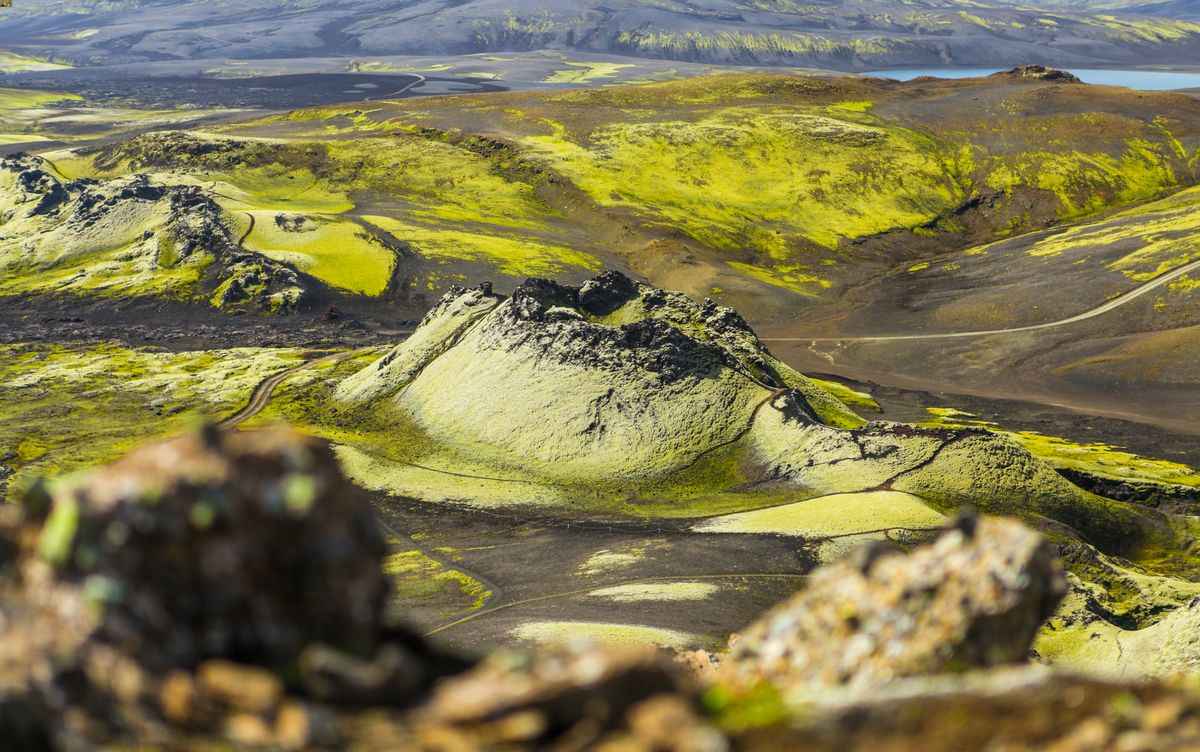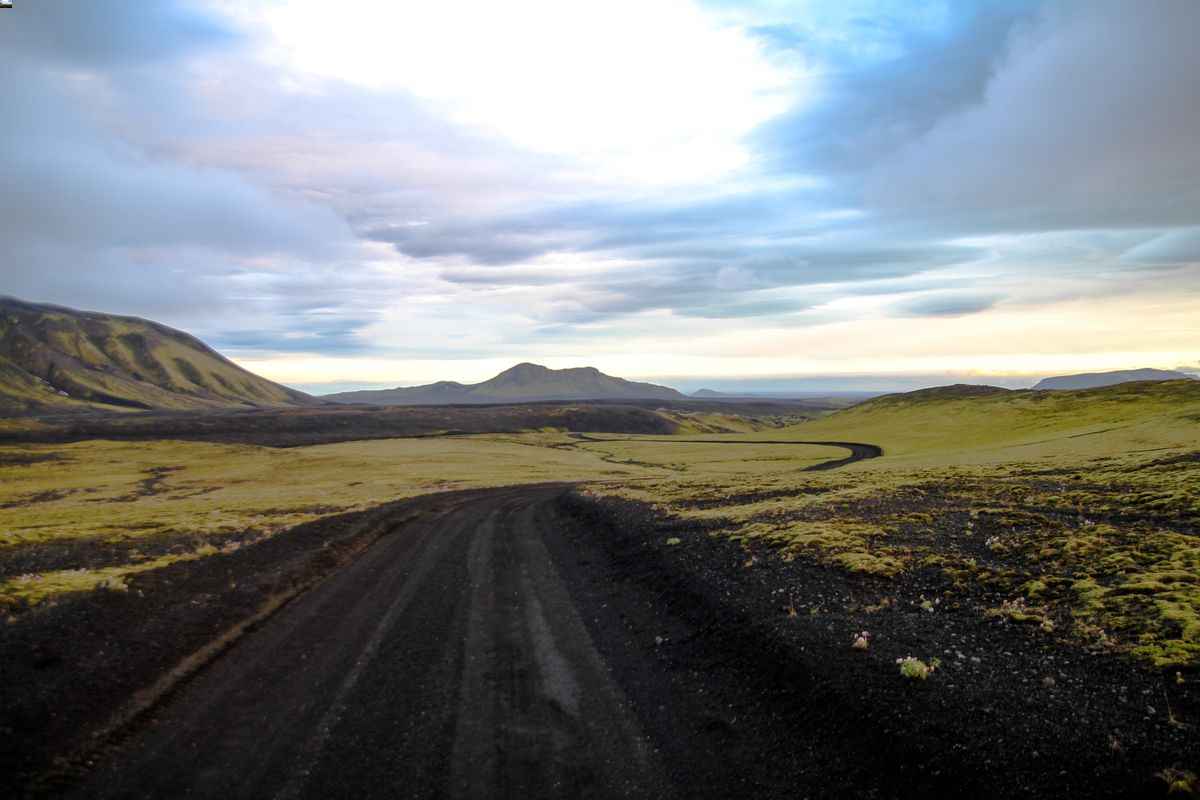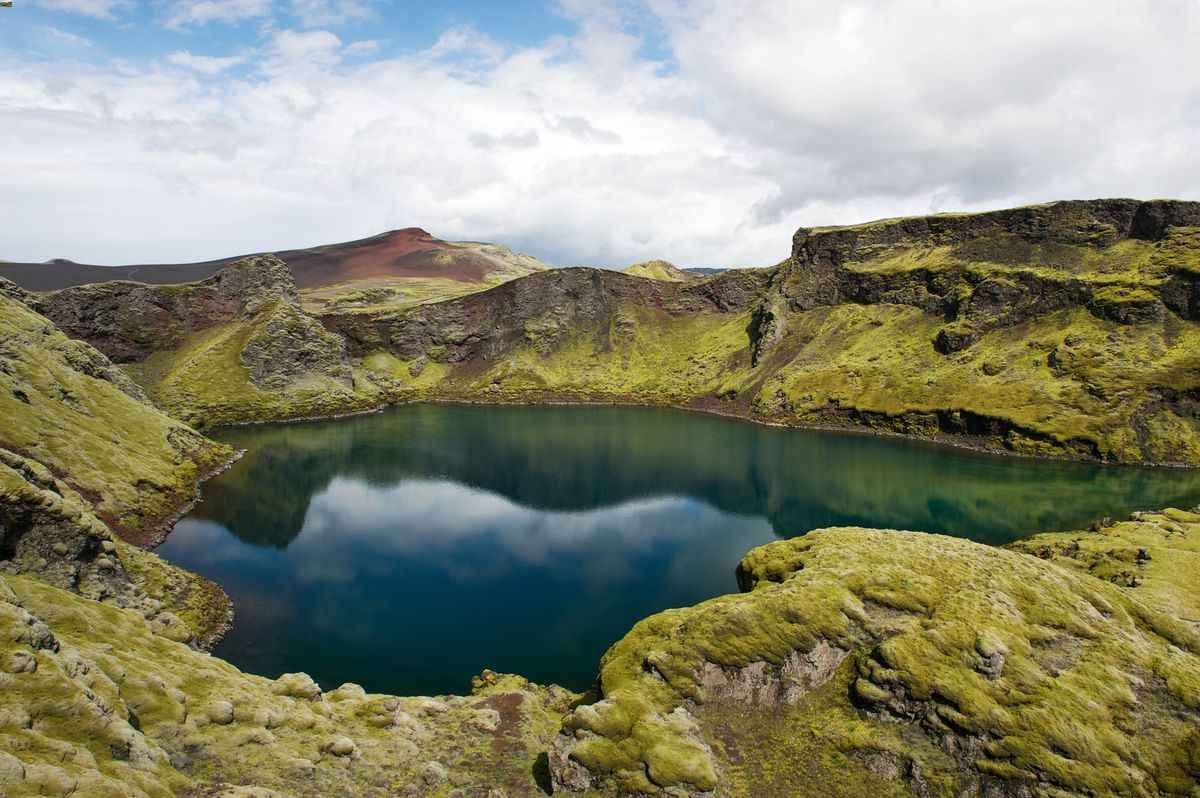
12 January
34 min read
Guide to Driving in Iceland with a Campervan

21 March 2022
7 min read
Not many people know that the vast majority of Iceland is completely uninhabited. The country’s interior, known as the Highlands, is inaccessible for most of the year due to harsh conditions. However, in the summer months, this wide, wild, unspoiled expanse opens up and demands to be explored.
But this doesn’t mean that getting into the Highlands becomes a suddenly easy journey. To reach them, you must drive on the Highland roads, known as F-roads. Let’s talk about what to expect on F-roads, and one in particular: the F206 road of Iceland.
Before we begin, keep in mind that to navigate this road, you’re going to need a specific type of vehicle. Book yours at Campervan Reykjavík!

Iceland’s F-roads are unpaved gravel roads, which are not often maintained and closed for most of the year. They’re only accessible between June and September, and during specific dates depending on the weather. Since many F-roads involve river crossings, the roads will close if the rivers become too deep.
A few F-roads cut across the entirety of the Highlands, but most only penetrate partly into it. This means you must return to the coast the same way you entered. Many of the roads follow old trade routes, whereas others provide access to points of interest.
To drive on an F-road, you must have a 4x4 vehicle, preferably one that is raised up. This is to ensure that the aforementioned river crossings don’t pose a problem for your vehicle. If the weather is bad, it’s best to change your plans. The last thing you want is to get stuck on an F-road; rescue is hours away.

Ensure that you’re well-stocked with plenty of food and water, because there are little to no supply options. Also, embark on your Highlands adventure with a full tank of gas/fully-charged battery, as you won’t have access to replenish for a while.
Finally, dress in warm, waterproof clothing, no matter the time of year. The weather in Iceland is famously unpredictable and can be extreme in the country’s interior, even in summer.
All of that aside, driving through the Highlands is one of the most rewarding things you can do in Iceland. The views are incredible and the landscape is almost completely untouched.
The vast majority of tourists do not make it all the way up, so you’ll be soaking in all the beauty with a limited audience. Not to mention getting to see some of the most incredible volcanic eruption sites on earth.
On that note, let’s move on to Route F206 and discover what it leads to.
This road runs through the site of one of the deadliest volcanic eruptions in Iceland’s history.
Lakagígar, or “Laki Craters” is used to describe the fissure left over after the eruption. In 1783, the Lakagígar volcanic system began spewing forth lava, smoke, and ash, quickly covering the entire area. The event was devastating for the people of Iceland.
As a result of the eruption, over 50% of the country’s livestock died from poisoning. This led to the death of 25% of Iceland’s human population. The effects of this massive loss of life were felt far beyond Iceland.

Due to the changes in weather caused by huge amounts of sulfur dioxide, many other countries around the world suffered. Much of Europe experienced droughts, crop failures, and many died from sulfur dioxide poisoning. Although the volcano only erupted for eight months, it produced years of hardship for many people.
The “Haze” covered much of the Northern Hemisphere, spreading as far as China. In fact, the eruption is believed to have been a factor in the French Revolution, as it led to widespread famine. Many Icelanders migrated, leaving behind the devastation the volcanic system had wrought.
Fortunately, Iceland and the world recovered, and the eruption site is now a fascinating place to visit. The fissure is 27 km (17 miles) long and contains 130 craters, so there’s a lot to enjoy in the area. The lava field, which was created as a result of the eruption, covers 565 km².
Road F206 can take you most of the way to Lakagígar, and there’s a car park at the hike’s start. The road begins at a junction with Route 1, the Ring Road, along the south coast. The Laki car park is just over 40 km (25 miles) above the Ring Road, a journey of around 2 hours.
The route involves crossing deep rivers, so only take F206 if you have a suitable vehicle. Fuel up at the closest petrol station near the start of the F-road, in the town of Kirkjubæjarklaustur.

Be wary of straying too far in the highlands, or going off the path. At some point, the vast, lava-covered landscape begins to look the same, so it’s easy to get lost. There’s a visitor trail that starts in the car park and passes through one of the craters. Stick to that path; it’s around 500 meters long and will offer incredible views.
Both the behind-the-wheel journey and the hikes are considered “challenging”. So don’t plan this trip unless you’re in good shape and are a confident driver.
And as mentioned above, if the weather forecast looks bleak, do something else. Heavy rain will make the rivers impassable and visibility may be reduced to dangerous levels.
To reach Route F206, follow Route 1 east from Reykjavík for around 3 ½ hours. Europe’s largest glacier, Vatnajökull, is close to Lakagígar, so you’ll be able to see it on a clear day. The eruption site itself sits inside the protected area of Vatnajökull National Park. Please avoid stepping on the delicate green moss, as it is easily damaged.
Bring decent hiking boots for the walk to the craters at the road’s end.
Consider staying somewhere close by, to avoid driving the whole distance from Reykjavík in one go. Route F206 is not far from the small town of Vík, which caters well to tourists. It’s also next to the famous black sand beach, Reynisfjara.
Check that your insurance covers Gravel Protection. If it doesn’t, it’s a good idea to purchase it, as driving on gravel roads can damage a car’s underside.
Stick to the road. Off-road driving is illegal in Iceland, and you’ll not only damage plant life, you’ll also risk getting lost.
Bring a good pair of sunglasses. In the summer months, Iceland experiences almost 24 hours of daylight. Hopefully, the sky is clear during your trip, and if it is, you’ll need sunglasses for driving.
Iceland has incredibly clean water. If you run low, you can fill your bottles up at any river, and there are several on this route.
Check the weather forecast before leaving here and the road’s status online.
If you want an adventure off the beaten path, drive the F206 road in Iceland. The area is just one of many reminders of the island’s volatility. While eruptions are a regular occurrence for The Land of Fire and Ice, none have been more damaging than Laki. If you visit, you’ll be one of very few who have seen the Laki craters up close.
Book your sturdy, up-to-date rental from Campervan Reykjavík to ensure you have everything you need for the trip. Add some well-insulated clothing to the mix, and you’re all set. See you in the summer!
More Iceland Stories to Explore
Discover more tips and tales to fuel your next saga
Join thousands who have booked with us
Iceland's most booked campervan of 2025 is waiting. Secure yours today!
Your rental comes with:
Handy Extras
Essential Insurance Plan
Unlimited Mileage
Flexible Cancellation